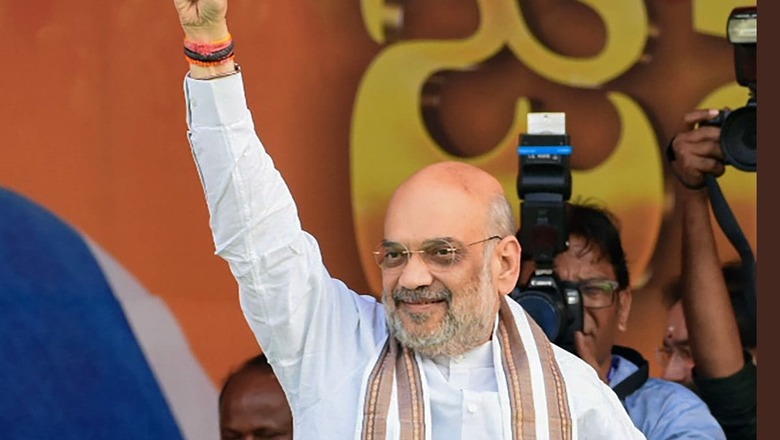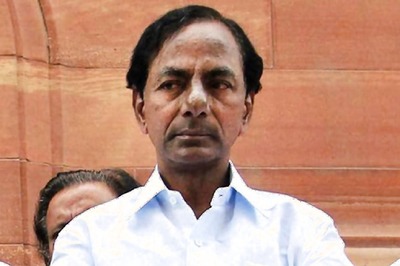
views
This week the Centre and the government of Manipur signed a peace treaty with the Khundongbam Pambei-led fraction of the United National Liberation Front (UNLF), the oldest Meitei extremist group in Manipur. This is a major breakthrough achieved by the Centre as for the first time a valley-based Meitei extremist group of the state has entered into a peace treaty with the Centre. This is likely to encourage other groups, including the NC Koireng-led faction of the UNLF, to join the mainstream shunning violence.
It has been seven months since the ethnic riots broke out between the Meiteis and Kuki-Zomis in the northeastern state of Manipur, which is still awaiting restoration of normalcy. Taking advantage of this situation, armed groups from both communities are trying to expand their base by inciting the communities against each other — posing a big security challenge before the Centre. Currently, there has been a Suspension of Operations (SoO) agreement between the Centre and the Kuki-Zomi insurgent groups since 2008. This year the state government, which was a part of that agreement, pulled out from the agreement.
The signing of this treaty comes at a crucial time when the valley-based insurgents, weakened over the years, are trying to utilise the current unrest on the ground in the northeastern state to strengthen themselves. The signing of this treaty is also important in the context of the present Meitei and Kuki-Zomi conflict as this is going to lessen the discontentment prevalent among the Kuki-Zomis, who have been the targets of these Meitei extremist groups. As a result of this, this treaty is also likely to have a positive outcome on the ongoing peace talks between the Centre and the Kuki-Zomi insurgent groups, who already are under SoO.
It has to be mentioned that days ago, the Union home ministry had extended the ban on eight Meitei extremist groups, including UNLF, for another five years. This shows how the ministry under Amit Shah is following a tough approach towards these extremist groups to bring them into the mainstream.
A visible change towards the Northeast region post-2014
It is an unfortunate fact that the potentiality of the Northeast region — rich in forest reserves and diversity — hasn’t received its due, as expected, in the last seven decades and this is one of the main reasons for the propping up of many insurgent groups in the region. The groups have always taken advantage of New Delhi’s lack of interest in the region and as a result, the development projects took a hit with insurgency disturbing the peace of the region.
However, it has to be accepted that there has been a change among the policymakers of New Delhi since the Narendra Modi-led Bharatiya Janata Party (BJP) came to power at the Centre in 2014. It’s a fact that the often-neglected Northeast region of the country has received considerable focus from the policymakers of New Delhi post-May 2014. This is evident with the increase of infrastructural projects like rail, road and air connectivity in the region. As a result of this, the stories of the region are also getting attention in the mainstream discussions, though the attention they receive is still less.
Amit Shah stressing on negotiations with insurgent groups
After the return of the BJP to power in 2019, Amit Shah, often known as the party’s second-in-command after Modi, became the home minister of the country. Since then, he has been leading from the front to negotiate peace with insurgent groups in various parts of the Northeast. True that the insurgency has been reduced in the region, but there are some insurgent groups still working to disturb the peace.
In August 2019, the Government of India and the government of Tripura signed a Memorandum of Settlement with the National Liberation Front of Twipra led by Sabir Kumar Debbarma (NLFT-SD), an insurgent group that tried to disturb the peace of the Northeastern state of Tripura. Although the peace talks started before Shah became the home minister, his role in ensuring that the peace talks reached a fruitful end can’t be denied. This settlement came after the NLFT leadership sent a letter to Shah for a conclusive end to the ongoing peace talks.
It has to be mentioned that peace returned to Tripura by the late 2000s as a result of the policies initiated by the then Manik Sarkar-led Left Front government of the state, supported by both Atal Bihari Vajpayee-led NDA and Manmohan Singh-led UPA governments at the Centre. This makes it clear that when the Memorandum of Settlement was signed, extremist NLFT was a pale shadow of the past but still the Centre, particularly Shah, went on to sign the memorandum showing that the Centre didn’t want to leave any insurgent group — even if it was a weakened force — to remain active.
One of the important peace treaties signed by the Home Ministry under Amit Shah was the Bodo Peace Accord in January 2020. The tripartite treaty was signed by the Government of India, the government of Assam and all factions of the extremist National Democratic Front of Bodoland — and Shah himself was present. The signing of this treaty was significant as this brought an end to the insurgency in Assam, particularly in the Bodoland region. Importantly, it has to be mentioned that the earlier governments at the Centre signed treaties as well, to bring peace to Bodoland, and this was the third treaty. Nevertheless, this shows that the priority of this government, particularly the Union Home Ministry under Shah, is also committed to ensuring peace and stability in the region.
Treaties beyond insurgent groups to solve old issues
As said earlier in this piece, one of the reasons that the Northeast region has seen the rise of many insurgent groups is because of the lack of focus from the policymakers of New Delhi. This lack of focus kept the old issues boiling and gave rise to resentment among people. When this resentment is left to fester, it gives birth to the insurgency. It has to be mentioned that this region is a very diverse one with many ethnic tribes — having their own identity and culture — sharing their livelihoods and also their differences and a small flame can cause damage to this social fabric.
Take the case of Brus, also called Reangs, of Mizoram. They are mostly Vaishnavite Hindus with a section practising Christianity and they often had clashes with the majority Mizo community. Later, many Brus had to flee from their localities alleging persecution at the hands of Mizos and took shelter in neighbouring Tripura as refugees in 1997. Some of the unhappy Brus took arms, although years later, they had peace agreements with the government of Mizoram. But still, the Brus living as refugees in Tripura had no identity till 2020.
It was after 23 years of their unfortunate displacement that they got their permanent identity as a result of the signing of the agreement, presided over by Amit Shah, among the Government of India, the governments of Tripura and Mizoram and Bru representatives. According to that historic agreement, around 34,000 displaced Brus were to be permanently settled in Tripura. This was a long important humanitarian issue waiting for a permanent solution. There was deep resentment among the Brus and before it took the form of another insurgent group, the Centre stepped in to resolve it.
It is not that all the Brus have been settled by now, the process is on with the Tripura government working on it. There is dissatisfaction among the Brus too with the process allegedly being slow. Aware of the issue, Shah himself at various times reviewed the implementation of the Bru agreement with the Tripura government.
Shah leading discussions to bring peace to Manipur
Three months ago, the decision of the Kuki-Zomis to bury their own 35 people in Churachandpur, opposed by the Meiteis, would have resulted in more tensions. But it was the timely intervention of Shah through Mizoram Chief Minister Zoramthanga that prevented the escalation. Days later, Shah himself met with leaders from the Kuki-Zomi communities and urged them to shift their burial site, considered pious by the Meiteis. The riots have left both the Meitei and Kuki-Zomi communities heavily polarised that any small incident has the potentiality to escalate the situation of the state.
It is not that he has been engaging with only Kuki-Zomis, he has been engaging with the Meiteis and Nagas too, to bring peace to Manipur. The signing of the above-mentioned peace treaty with the Meitei extremist group, UNLF, is a fruitful outcome of these engagements.
Naga solution remains a challenge
Apart from Manipur, Naga Peace Talks is one of the crucial issues of the region waiting to be resolved. These are some of the challenges that lay ahead of the Union Home Ministry led by Amit Shah with the Naga Socialist Council of Nagaland-Isak-Muivah (NSCN-IM) insisting on a separate constitution and a flag. It remains to be seen how the ministry under his leadership tackles these issues.
But this can’t be denied that his efforts as a union minister have started to bear fruits with many parts of the region becoming free from the Armed Forces (Special Powers) Act or AFSPA. According to a report, the state of Assam may be free from AFSPA by the end of this year. If this happens, it would be a big development highlighting how insurgency has been weakened in the state.
It has to be mentioned that the AFSPA was first introduced in the state in 1990 and has been extended multiple times since then. United Liberation Front of Assam (ULFA), a dreaded extremist and terrorist group, is on the brink of extinction. The ULFA pro-talk faction is currently in discussions with the Centre and the state governments while the ULFA(I), led by Paresh Barua, is yet to join the discussion table. Amit Shah is keen to bring the Paresh Barua faction to the table too and has given this responsibility to Assam Chief Minister Himanta Biswa Sarma.
The author is a political commentator and tweets @SagarneelSinha. Views expressed in the above piece are personal and solely that of the author. They do not necessarily reflect News18’s views.


















Comments
0 comment